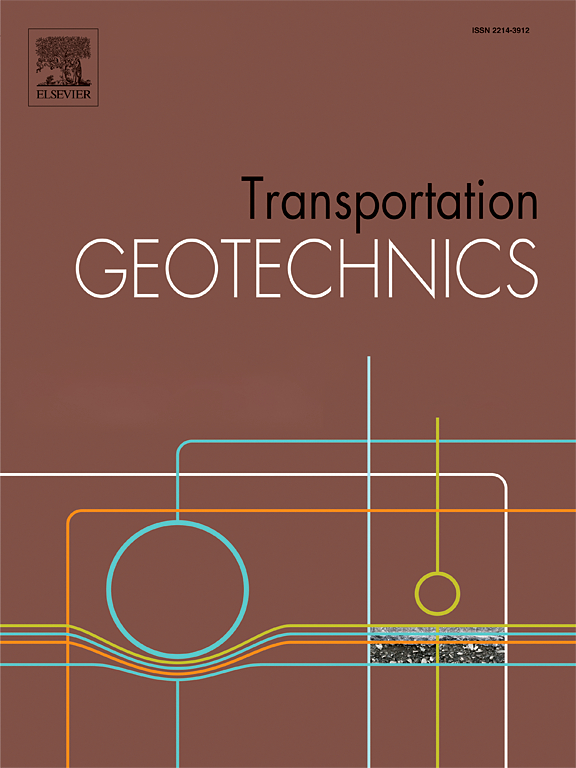Novel permanent deformation model for granular materials
IF 4.9
2区 工程技术
Q1 ENGINEERING, CIVIL
引用次数: 0
Abstract
Ensuring the long-term functionality of traffic infrastructures requires systematic and reliable evaluation of the structures’ deformation behavior. To address this need, this paper introduces a novel material model for describing the permanent deformation behavior of granular materials. The primary principle of model development has been maximizing its practical usability through streamlined parameterization. Consequently, the model is simplified to have only one material-dependent parameter, the cyclic threshold stress, which can be estimated with reasonable accuracy using static strength parameters. The proposed theory has been validated utilizing a wide range of data available in literature on various types of materials, which have been tested in laboratory and field conditions. Based on the verifications, the model’s accuracy can generally be considered good overall. The simple parameterization, combined with reliable accuracy, enhances the model’s practical usability, making it a viable option alongside existing methods.
求助全文
约1分钟内获得全文
求助全文
来源期刊

Transportation Geotechnics
Social Sciences-Transportation
CiteScore
8.10
自引率
11.30%
发文量
194
审稿时长
51 days
期刊介绍:
Transportation Geotechnics is a journal dedicated to publishing high-quality, theoretical, and applied papers that cover all facets of geotechnics for transportation infrastructure such as roads, highways, railways, underground railways, airfields, and waterways. The journal places a special emphasis on case studies that present original work relevant to the sustainable construction of transportation infrastructure. The scope of topics it addresses includes the geotechnical properties of geomaterials for sustainable and rational design and construction, the behavior of compacted and stabilized geomaterials, the use of geosynthetics and reinforcement in constructed layers and interlayers, ground improvement and slope stability for transportation infrastructures, compaction technology and management, maintenance technology, the impact of climate, embankments for highways and high-speed trains, transition zones, dredging, underwater geotechnics for infrastructure purposes, and the modeling of multi-layered structures and supporting ground under dynamic and repeated loads.
 求助内容:
求助内容: 应助结果提醒方式:
应助结果提醒方式:


